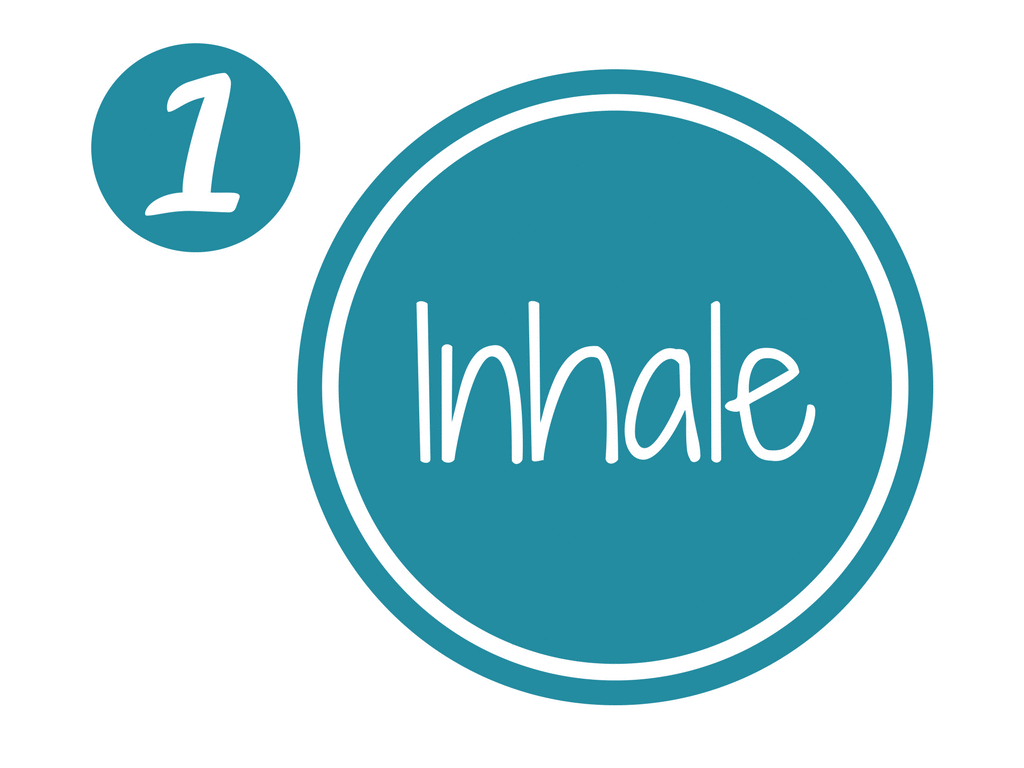4 Breathing Methods For Anxiety – And Why They Work
We’ve compiled the best breathing exercises for anxiety that can improve your overall breathing or calm you down when you notice that you’re stressed or anxious.

Before you start reading, I invite you to pay close attention to your breathing for a moment. Do you breathe fast or slowly? Do you breathe through your mouth or nose? Do you breathe from the upper or lower part of your chest?
Even though we're typically not aware of it, the way we breathe affects our body in a fundamental way. And so do stress and anxiety. That's why in this post we're going to focus on the best breathing exercises for anxiety and how proper breathing can benefit you when you are dealing with stress and anxiety.
Our breath is a great tool to manage anxiety when it hits. If we use it right.
There are two main reasons for that:
- You can control your breath. It’s like our internal control system and affects the heart, muscles, brain and even our digestive system.
- The breath directly influences our automatic nervous system. And that’s how it can help us calm down.
Learn to manage anxiety in only 5 minutes per day
The Emergency Response
Stressful situations usually trigger shallow, fast breathing. This stimulates our autonomic nervous system and prepares us to activate the so-called Emergency Response. This is our bodies’ reaction to immediate danger, getting you ready to respond effectively. However, if you are dealing with regular panic attacks or anxiety, the Emergency Response can also be activated in situations that aren't actually dangerous.
Let’s say last year you experienced a panic attack at your friend Emma’s birthday party. You get an invite in the mail and Emma invites you to it again. This makes you recall what happened back then. The unpleasant feeling you had, your negative emotions and your panic attack. Your mind says to your body:
‘The danger is now! Protect me!’
When anxiety or a panic attack like this hits, the body starts up the Emergency Response. This can have many effects, such as an increased heart rate, muscle tension and the feeling of not getting enough air. To make up for this, the brain then orders the lungs to breathe more rapidly. It does so by using only the upper lungs. And even though this might seem like a good way to counter not getting enough air, it is not. Because that’s when we start to hyperventilate.
Breathing in rapidly gives your body more oxygen (O2) than it actually needs, while carbon dioxide (CO2) levels in your body go down significantly. The result can be dizziness, a lump in your throat, tingling or numbness in the hands or feet and even nausea and confusion. In other words, this way of breathing is counterproductive.
Knowing how to flip the script on the Emergency Response can profoundly reduce stress and anxiety. The goal is to balance your O2 and CO2 levels, slow down your breathing and heart rate, strengthen the diaphragm and use less energy to breathe. But how do we do that? And isn’t a diaphragm a birth control method?

How To Breathe Correctly
There are 4 easy handles to check whether you breathe correctly. These might sound like common sense, but are nevertheless really important.
- Breathe through the nose. By doing so you automatically decrease the amount of oxygen you take in. An added bonus is that this also cleans out unfiltered, polluted air.
- Breathe with your diaphragm, which is a thin muscle at the base of your chest. Your breathing should feel nice and deep with the air coming in through your nose all the way down to your belly.
- Breathe more slowly. The faster you breathe in and out, the more work you give your body. That helps reduce stress and anxiety. The nose has to filter out the air, the lungs have to absorb the oxygen and the heart has to pump the oxygen through your veins. By breathing more slowly your body responds and relaxes, which makes you feel more energetic.
- Breathe rhythmically. Rhythms make life more efficient and easy. Most things in nature have their own rhythm. And when your breathing rhythm is in tune, you function better too.
Putting Theory Into Practice
Breathing in accordance with those four handles sounds very simple, but it surely isn’t easy. That’s why we’ve compiled the best breathing methods for anxiety that can improve your overall breathing or calm you down when you notice that you’re stressed or anxious.

1. Imagine Blowing Up A Balloon
This is one of the greatest and easiest breathing methods for anxiety, which activates relaxed breathing. Try to focus on slowing down your out-breath and ignore your in-breath. When the out-breath becomes slower, the in-breath will naturally lengthen as well. Imagine that you are blowing up a balloon on the out-breath with no force at all, slowly and steadily.
While doing this you can also check your body for tension. When you feel anxious or stressed you might experience tension in your lips, jaw or shoulders. Every exhale is an opportunity to allow the tension to leave the body and reduce stress and anxiety.
2. Alternating Nostril Breathing
This exercise is one of the breathing methods for anxiety that focuses on breathing through the nose. Simply close one nostril by putting your finger over it and breathe in and out using the other nostril. After every breathe cycle, change sides. This is a great way to slow down your breathing and start getting used to nose breathing at the same time.
3. 4-7-8 Breathing
If you are familiar with meditation techniques you might have heard of this one before. It is also one of the best breathing exercises for anxiety. Breathe in for 4 seconds, hold your breath for 7 seconds and exhale slowly for 8 seconds. This helps the exchange of O2 and CO2 and reestablishes the balance in your blood.
To make things easier, we created this 4-7-8 breathing gif to guide you through the exercise. This breathing gif for anxiety should help you reduce stress and manage anxiety. Scroll down a bit so the gif fills as much of your screen as possible and follow it slowly for three to four minutes. After that, see if you can notice any changes:

4. Daily Reminders
Do you want to actively better your breathing throughout the day? Try setting mental reminders and go through the four breathing methods for anxiety discussed earlier.
A great way to go about this are so-called implementation intentions, or if-then plans. They sound like this:
- When I set my alarm before going to sleep -> I will check my breathing.
- When I set a cup of coffee -> I will check my breathing.
- When I put on my shoes -> I will check my breathing.
Pro-tip! If you want to check which breathing methods for anxiety work best for you, you could download a heart rate sensor and monitor which exercises slow down your heart rate the most.
Time To Take Action
In essence, it all boils down to recognizing when you breathe properly and when you breathe badly. If you really want to take this advice to heart, there are three action points that you could focus on throughout the next few days:
- Breathe through the nose, using the diaphragm, slowly and rhythmically.
- When you feel stressed or anxious, use one of the breathing methods we covered. Blow up a balloon, do the nostril breathing, whatever works best for you.
- Set yourself daily reminders to check in on your breathing.
One last point. Don't be too harsh on yourself if these breathing methods for anxiety don't work right away. The breathing exercises we covered are meant to calm you down, not stress you out.
If you would like to practice more, try out the Stresscoach app.

